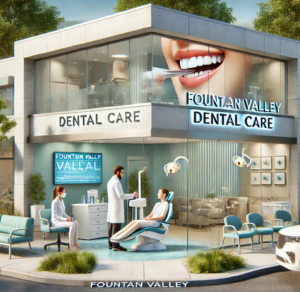
When it comes to maintaining oral health, dental insurance can play a crucial role in ensuring that individuals receive the necessary care without facing significant financial burdens. With a wide variety of plans and providers, understanding which dental insurance option is most common can help you make an informed decision about your own coverage. In this blog, we’ll explore the most common form of dental insurance and how it works, as well as how it supports access to professional dental care.
Why Dental Insurance is Important
Dental care can be expensive, particularly if you need major procedures such as crowns, root canals, or oral surgery. Even preventive care like cleanings and checkups can add up over time. Dental insurance helps to offset the costs of routine and emergency dental services, making it more affordable for individuals and families to maintain their oral health.
Without insurance, many people might skip necessary treatments or routine visits, leading to larger, more expensive problems down the road. Having dental insurance encourages preventive care, which can help avoid serious dental issues like gum disease, cavities, and tooth loss.
Types of Dental Insurance Plans
Before we dive into the most common type of dental insurance, it’s essential to understand the different kinds of plans that are available. Here are some of the primary types of dental insurance plans:
- Preferred Provider Organization (PPO): PPO plans offer a network of dentists that provide services at discounted rates. Members can choose to see out-of-network dentists, but they will pay more for services. PPO plans are among the most popular because they offer flexibility in choosing a dentist.
- Health Maintenance Organization (HMO): HMO dental plans, also known as Dental Health Maintenance Organizations (DHMOs), require members to see dentists within a specified network. Out-of-network services are not covered, except in emergency situations. These plans tend to have lower premiums but offer less flexibility compared to PPOs.
- Indemnity Plans: Also called fee-for-service plans, indemnity plans allow members to visit any dentist. The insurance company pays a percentage of the total cost, and the patient is responsible for the remainder. These plans provide the most freedom, but they often come with higher out-of-pocket costs.
- Discount Dental Plans: Discount dental plans are not insurance but rather membership programs where members receive discounts on services from participating dentists. These plans are usually more affordable than traditional insurance but do not offer the same coverage or benefits.
The Most Common Form of Dental Insurance: PPO Plans
Among the different types of dental insurance, Preferred Provider Organization (PPO) plans are by far the most common and widely used. These plans are popular due to the balance they offer between cost and flexibility. Let’s take a closer look at why PPO plans are the most common form of dental insurance and how they work.
How PPO Dental Insurance Works
PPO plans operate by establishing a network of dentists who have agreed to provide services at discounted rates to the insurance company’s members. This network is one of the main advantages of PPO plans, as members can take advantage of lower costs when they visit in-network dentists. However, one of the key benefits of PPO plans is that members can still choose to see an out-of-network dentist, though they will pay a higher share of the cost.
In most PPO plans, there is an annual deductible that must be met before the insurance company starts covering a portion of the services. Once the deductible is met, the insurance typically covers a percentage of the cost, with the patient responsible for the remaining balance.
PPO plans often have three tiers of coverage:
- Preventive Care: Routine checkups, cleanings, and X-rays are typically covered at 100% by PPO plans, meaning there is no out-of-pocket cost for these services.
- Basic Care: This includes fillings, extractions, and periodontal treatments. PPO plans generally cover a significant portion of these costs, usually around 70-80%, with the patient covering the remainder.
- Major Care: More complex procedures such as crowns, bridges, and root canals fall under major care. For these services, PPO plans typically cover around 50%, leaving the patient responsible for the rest.
Why PPO Plans are the Most Common
There are several reasons why PPO plans are the most popular form of dental insurance. One of the main factors is the flexibility they offer. With a PPO plan, members are not restricted to a narrow network of providers, allowing them to see both in-network and out-of-network dentists. This flexibility is especially important for individuals who may already have a trusted dentist or who need to see specialists not available within the plan’s network.
Another reason for the popularity of PPO plans is their widespread acceptance. Most dental practices accept PPO plans, making it easier for individuals to find a dentist who participates in their insurance network. This makes professional dental care more accessible, encouraging individuals to prioritize their oral health.
Finally, PPO plans often cover preventive care at 100%, which helps promote regular visits for cleanings and checkups. This aspect is essential because preventive care can help avoid more severe and costly dental problems in the future.
Benefits of PPO Plans for Professional Dental Care
For individuals seeking professional dental care, PPO plans provide several advantages:
- Cost Savings: By using in-network providers, members can take advantage of discounted rates on services. Even if a member sees an out-of-network dentist, they will still receive some coverage, though it will be at a lower rate.
- Wide Access to Dentists: With a large network of participating providers, PPO plans offer more options for patients to choose the dentist that best fits their needs.
- Comprehensive Coverage: PPO plans provide coverage for a wide range of services, from preventive care to more complex treatments like root canals and crowns. This makes it easier for individuals to get the care they need without worrying about prohibitive costs.
Drawbacks of PPO Plans
While PPO plans are the most common and popular, they do have some potential drawbacks. For example, premiums for PPO plans are often higher than those for HMO plans or discount dental plans. Additionally, the out-of-pocket costs for services, especially when visiting out-of-network providers, can add up. Members should also be aware of annual maximums, which limit the total amount the insurance company will pay for dental services in a given year.
Conclusion: Choosing the Right Dental Insurance for You
When it comes to selecting dental insurance, it’s important to consider your individual needs, budget, and the type of care you expect to receive. While PPO dental insurance is the most common form of dental coverage due to its flexibility and widespread acceptance, it may not be the right fit for everyone.
If you prioritize seeing a specific dentist or specialist and want the flexibility to choose providers both in and out of network, a PPO plan could be the best option. However, if you are looking to save on premiums and are comfortable with a more limited network, an HMO or discount dental plan may be worth considering.
No matter what plan you choose, having dental insurance can make professional dental care more affordable and accessible, ensuring that you and your family maintain healthy smiles for years to come.






